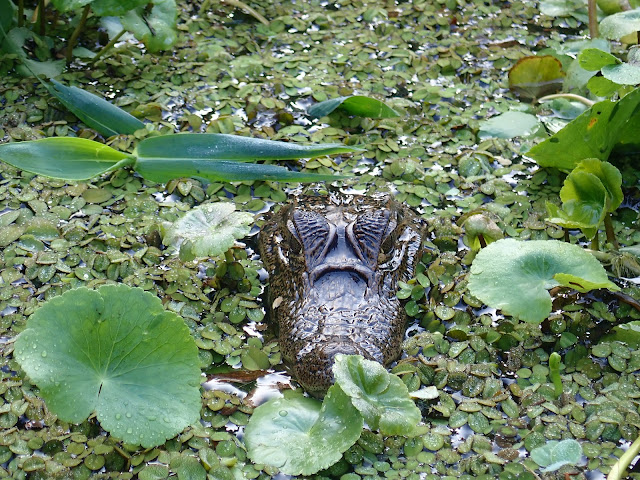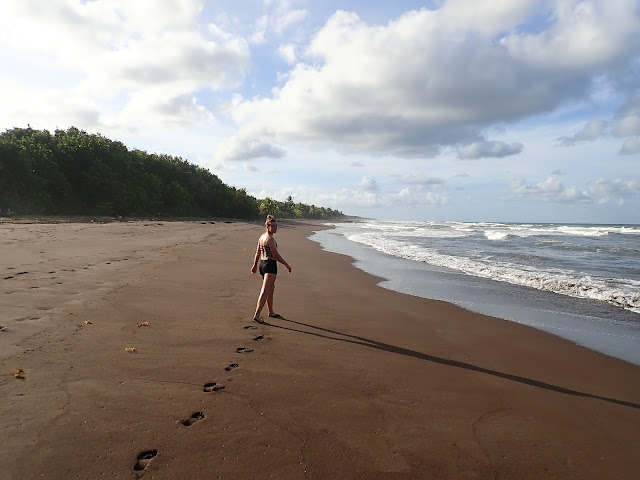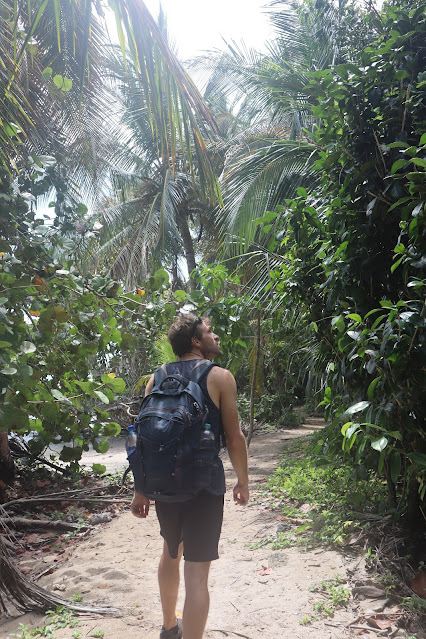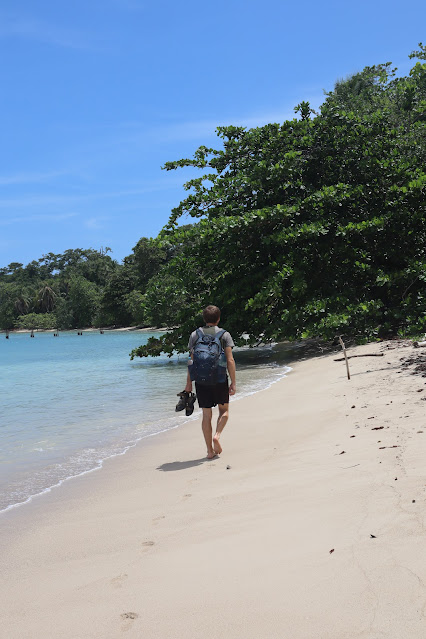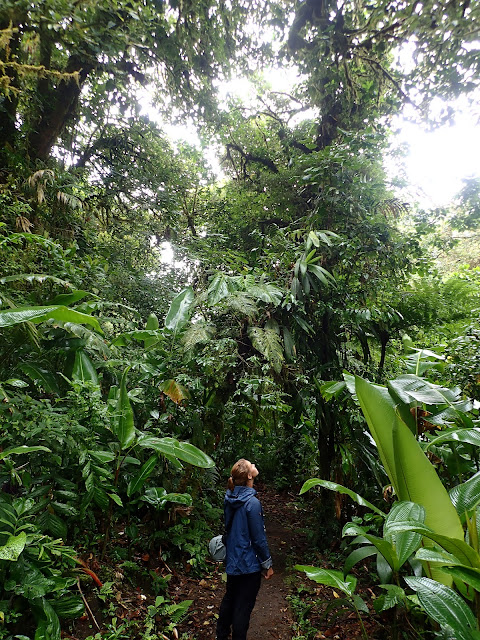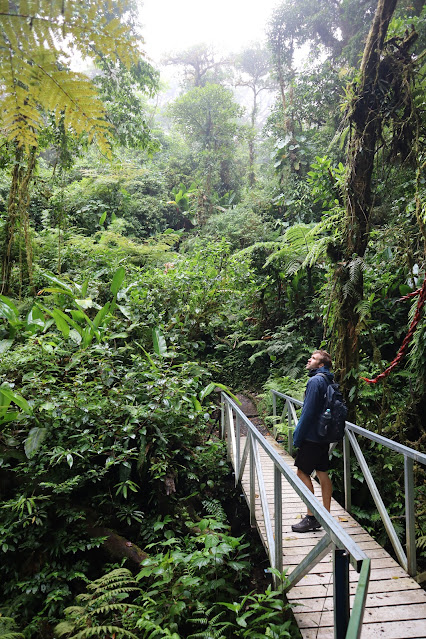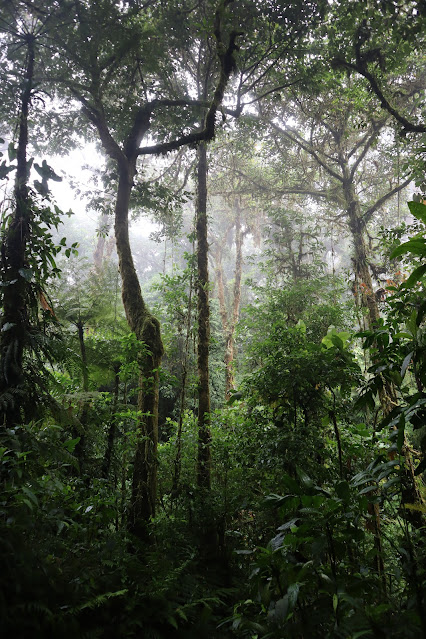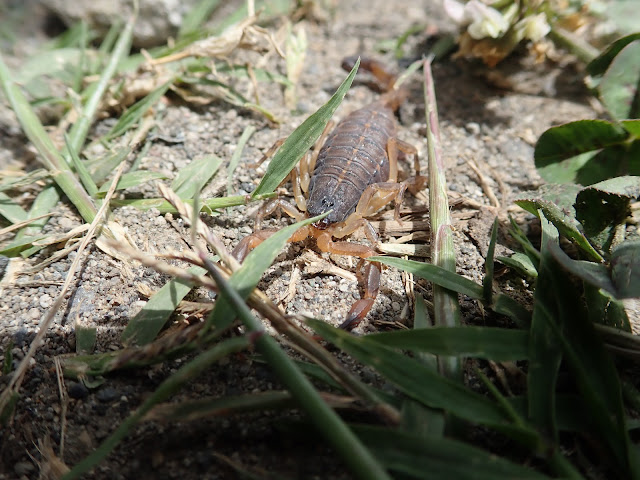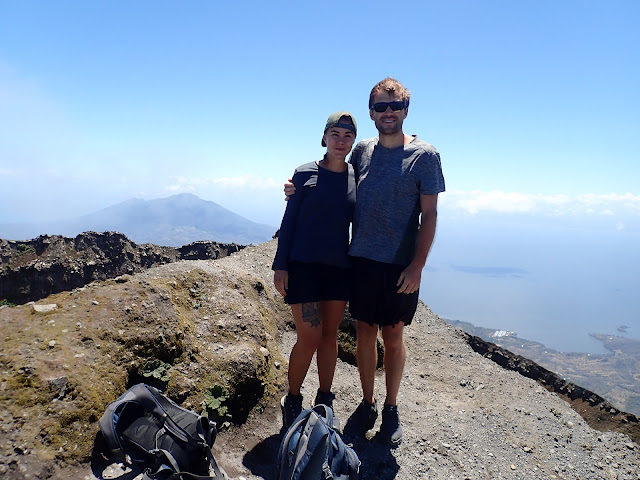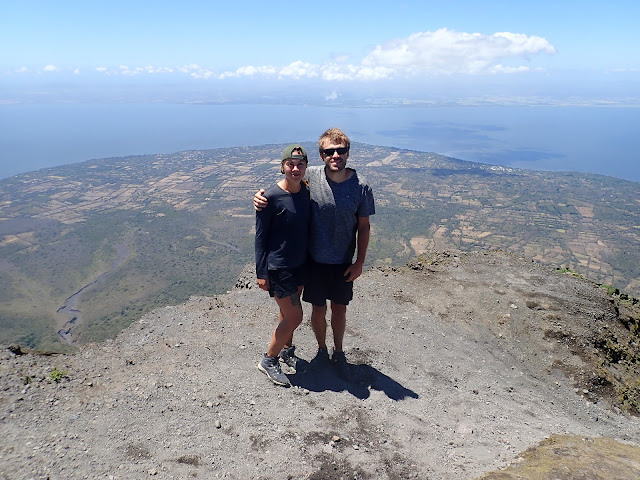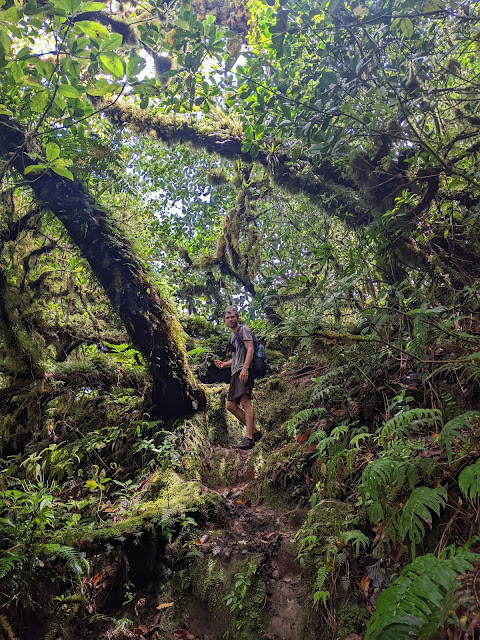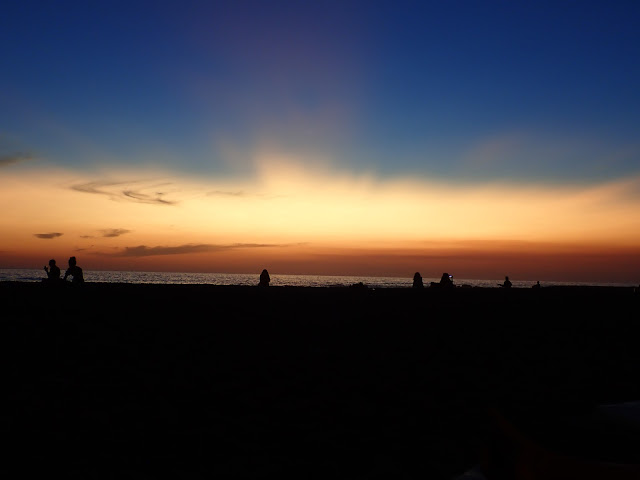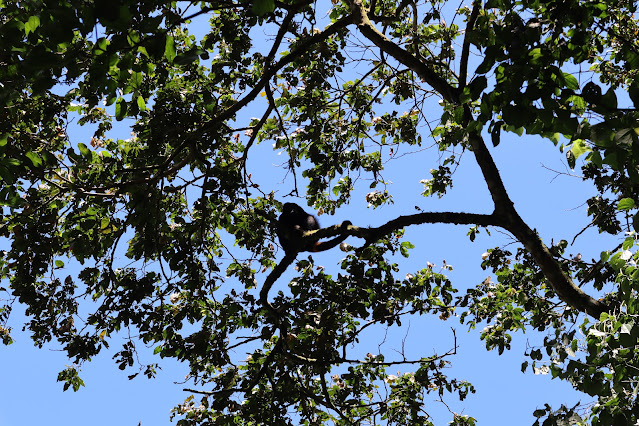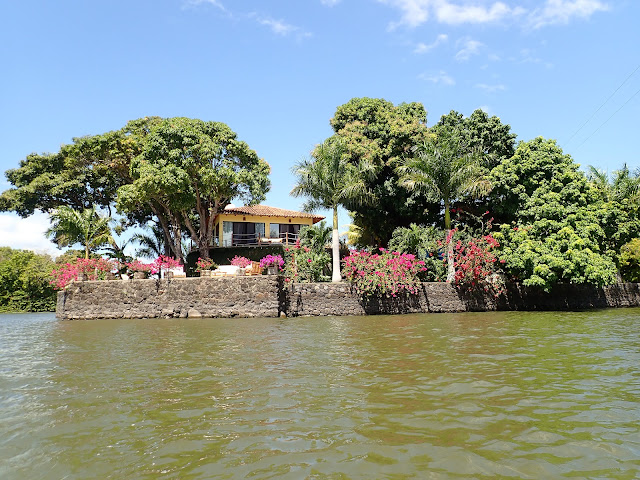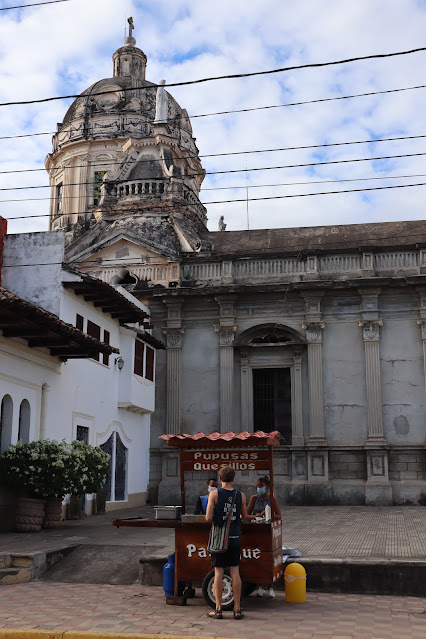The Caribbean coast was definitely our favorite part of Costa Rica, with beautiful nature and fantastic opportunities to spot wildlife. To get from La Fortuna to Tortuguero, we took a shuttle (minibus + boat) since going by public transportation we wouldn't even be sure that we would make it the whole way in one day (4 buses + boat). The shuttle service was expensive; despite the many shuttle companies in the country it was not possible to pay anything less than $60. At least, we really enjoyed the trip. The boat tour, which was about an hour, was almsot like a sightseeing tour, as the captain would slow down in several places along the river so we could spot crocodiles, caimans, birds, iguanas and various other lizards. The small village is quite touristy but had a really nice atmosphere, with just a single "main street" with some restaurants and shops on each side.
In the evening we went looking for something small to eat, since we had had a late lunch. We found some street food (which generally seems quite uncommon in Costa Rica) - some grilled chicken skewers, or tortilla stuffed with a big piece of cheese and some sourcream. At one of the restaurants, we ordered a plate of patacones - smashed plantains, fried, and served kind of like fries but in a different format, and with a few dips, like guacamole and pico de gallo. Patacones soon became a favorite snack or side dish, somewhat reminding us of the tajadas we had in Honduras, but quite different still. Getting fried bananas with your burger or fish might seem like an odd idea, but it was so good.
The next day we were up extra early, to head to the national park. The main area of the park has a walking trail, but also consists of waterways that can be traveled and experienced by canoe, kayak, or a boat with a silent motor. Most of the guided tours start at 6 am when the park opens, and though we decided to go by ourselves (and by kayak) we opted for the same time, hoping we would get the opportunity to spot some more animals. I can say that this was one of our top 3 experiences of this trip. One of the first things that happened when we started to paddle towards the canals was that we saw an otter in the water! As we paddled on, there were quite a few guided groups around, and this meant we were sometimes able to see caimans, or a sloth high up in the trees, that a tour guide pointed out.
The main benefit of going by ourselves though was that we could keep going when the tour groups turned around to head back, since we didn't have a time limit. As we paddled on, further into the river system, we saw several lizards, including the green basilisks, turtles, monkeys, and - a tamandua! A small, tree dwelling anteater with a long tail munching on a termite nest high up in the trees. That was a really cool experience, and one of my favorite wildlife encounters. On top of all that, the environment was incredibly beautiful and it was pretty amazing just paddling around in the quiet, serene jungle.
 |
| Tamandua! yeah, you might need to zoom in a bit... |
Since the national park entry was valid for a full day, we took the walking trail in the afternoon. We spotted some green macaws cuddling up in a tree, and two guilty-looking raccoons crossing the path, but most of the trail was just a path by the beach.
The next day we went to another, smaller part of the national park which meant we first needed to take a boat taxi to the small village San Fransisco. Around the entrance and along the path were plenty of big spiders, which we assumed were not venomous (although quite creepy...) since they had let them be. This area is known to host red poision dart frogs, so of course we went scouting for them along the trail. We found two of them, very small and cute! The short trail went up a hill and provided us with a pretty view of Tortuguero, but spent about as much time waiting for the boat back as we did walking the trail. In the evening we had a very nice dinner, having shrimps in coconut sauce with pineapple rice and (of course) patacones.
 |
| View of Tortuguero |
The transportation to our final stop in Costa Rica was also a prebooked shuttle - which included a three hour boat ride, just as beautiful as all of the Tortuguero area, and then a short taxi to Cahuita. A small village, right next to a national park, but with a bit more touristy and expensive restaurants. Our first afternoon we decided to walk to one of the beaches in the area, and on the way we saw two sloths! This was the first ones we spotted by ourselves, and close enough to the ground that you could actually see for certain that it was a sloth.
In the morning, we woke up to the sound of howler monkeys, loud enough that I almost thought they were in the hostel garden. After breakfast we prepared some lunch sandwiches and headed to the park, which nicecly enough had a donation based entry fee (i.e. pay what want). The trail was 8km long and went through different types of nature which was really nice - the only downside was that it wasn't a loop, meaning we had to walk all the way back again (unless we wanted to try to catch a bus or a taxi). Along this trail we saw several sloths, monkeys (howlers, spider, and white faced capucins), raccoons and toucans. The beaches here were incredibly beautiful, so we also took the opportunity to spend some time on the pretty, white beaches until the park rangers came to shoo everyone out around 3pm.
We decided to come back again the next day, to do a shorter walk and spend most of the day on the beach. Despite our lunch sandwiches being safely stored inside a backpack, we were visited by both monkeys and raccoons sneaking up silently while were reading our books. We had learned the day before that trying to eat anything in the beach area would attract cheeky, thieving monkeys (and clearly raccoons as well, though they were much more timid), so we had to walk a bit further off in order to eat our lunch in peace.
Aside from the beautiful surroundings and beautiful beaches, Cahuita provided the best sloth encounters in Costa Rica as we saw many of them, and several close enough to the ground that we did not need binoculars to see them clearly. Walking around the cloud forests scanning the treetops is not necessary at all, if you plan on going to Cahuita.



